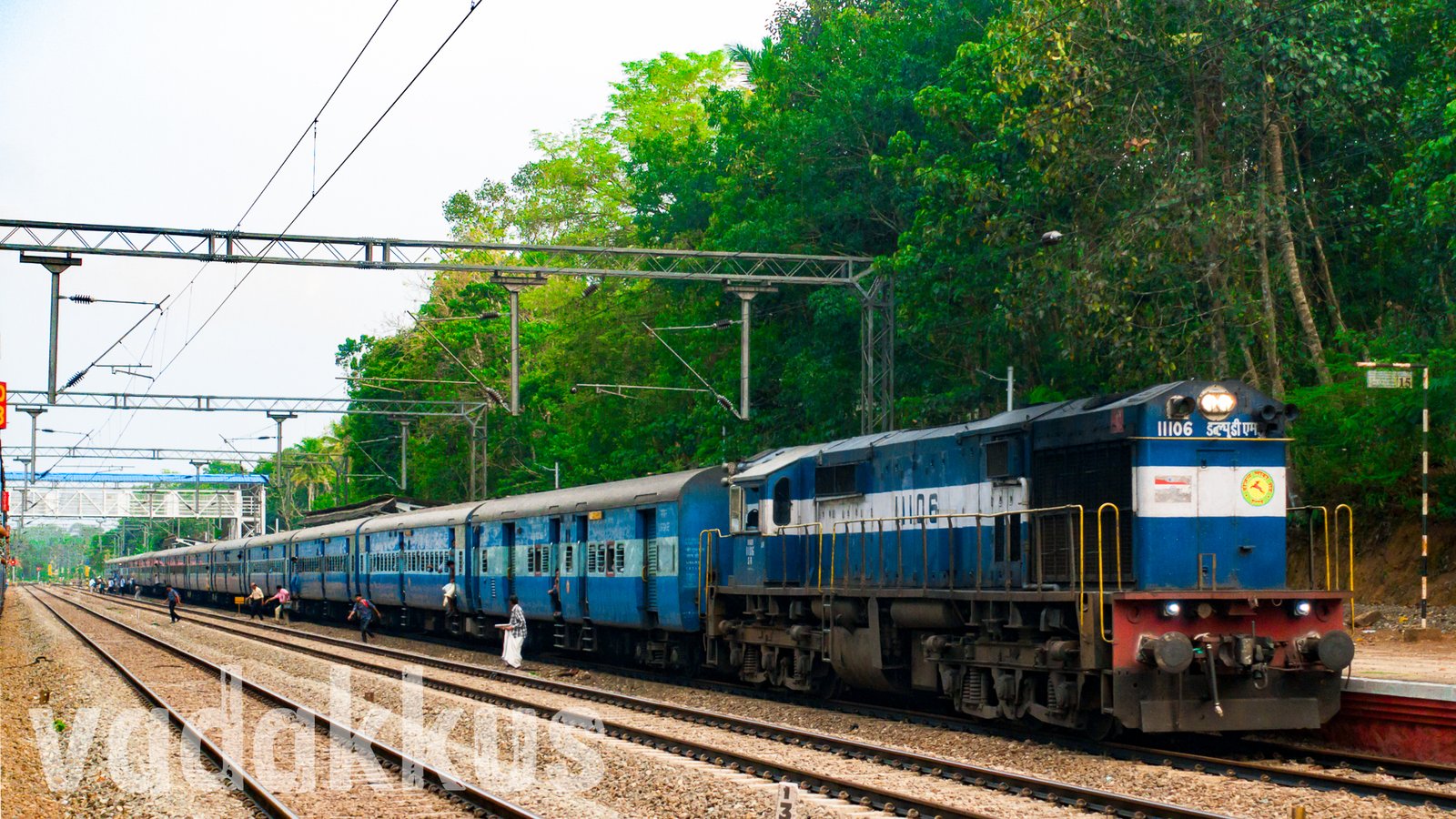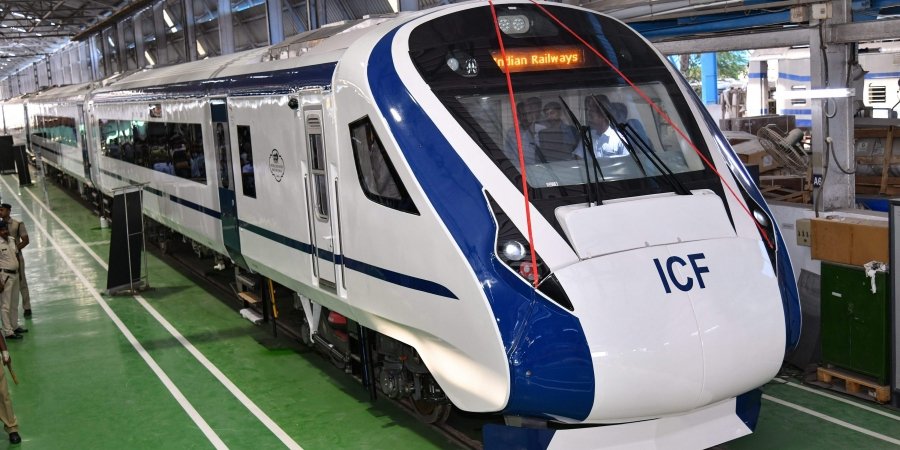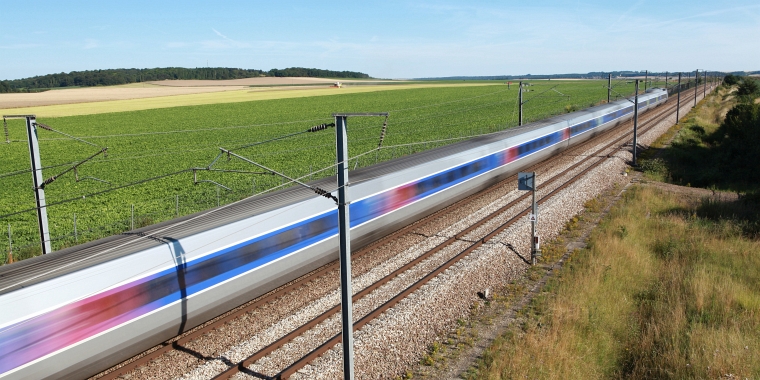Reinventing Indian Railways for Short-Distance Travel
Getting rid of old and entrenched mindsets is key in remaking the Indian Railways

The Jayanti Janata Express, introduced in 1965 to run between the Cochin Harbour Terminus (CHTS) and Bombay Victoria Terminus (Mumbai CSMT today), was the first major multi-day long-distance daily train out of Kerala. As such, it was the first means of affordable mass transportation over long distances available to the people of the region. This made the Jayanti the stuff of legend. She carried an aura of enigma around her, evoking a great deal of awe and reverence as the lone sojourner criss-crossing the Indian peninsula to places faraway and unknown. Her departure from CHTS at five in the evening five days a week (she wasn’t made a daily until 1977) was the most momentous occasion of the day, with people flocking to the station to see her depart. For the people of Kerala and a large part of Tamil Nadu, the Jayanti was the symbol of opportunity, their window to the world, their iron horse of salvation, as tens of thousands of people thronged it to seek their fortunes in Mumbai, beyond and everywhere in between. She was what a galleon was in the 1700s, a clipper ship in the 1800s, an ocean liner in the first half of the 20th century or a Boeing 747 in its second. There are no doubt countless stories to be told of lives, endurance and survival related to those journeys. The problem is that however at one point, these stories started to be considered as history.
Many societies were popularly introduced to the nuts and bolts of train travel through the stories and anecdotes early travellers told of their experiences aboard first trains like the Bombay Jayanti. Such stories have endured and over the past six years translated themselves into the tropes that created the popular perceptions, view-points and attitudes we carry today about trains and train travel in India. These tropes seem to have permeated not only among common people but the officialdom as well, influencing decisions on policy, traffic, finances and passenger behaviour. These tropes have to an extent held the Indian Railways back from reforming itself to meet ever-evolving challenges of the transportation ecosystem. This propensity of outdated perceptions derived from stories told long ago persisting to modern times unmindful of the changes occurring around may be called the Bombay Jayanti Complex. This chapter and the next deal with how the Indian railway system needs to overcome this inertia to reinvent itself to answer the questions of the modern era.
The Bombay Jayanti Complex
The Bombay Jayanti complex describes an entrenched, established multifaceted system of perceptions and conditioning that has created inertia in scale heavier than an average ICF train (which is again, a 1970s design) that has prevented Indian railway transportation from evolving to meet the challenges of the modern era. These tropes can be found everywhere. Some of the more obvious ones are talked about below.
Even to this day, quite a few people in India would think the purpose of the railways is to connect far-flung corners of the country with each other and with its megacities by the means of slow, strenuous and uncomfortable multi-day epic sojourns in overcrowded monstrosities of rattling metal. I personally know people who still think that you have to sit crammed on a bench with six people for four days all the way to Delhi from Thrissur without even being able to go the bathroom. This trope of the “uncomfortable” train journey probably came from the days when the Jayanti had only second class accommodation and most journeys had to be endured in jam-packed sitting coaches (today’s General Unreserved) and because until very recently (4-5 years ago) a vast majority of the people still equated train reservations with convoluted bureaucracy, process and corruption, even with IRCTC in existence for a decade and a half. It was only when smartphones became ubiquitous that people understood how simple the reservation process has become.
The most glaringly obvious example of this Bombaj Jayanti Complex is that famously sickeningly-sweet outpouring of nostalgia about train travel in the bygone days of the high noon of Indian socialism, perpetuated by mainly Boomer and Gen-X types who mostly moving in the gleaming environs of Jet bridges and late-model SUVs and haven’t set foot in an Indian train in decades, but are suddenly hit by wishful pangs for those simpler days long gone by. Oh, of those memories of multi-day train journeys to visit chachas, mamis and naanis with home-packed lunches and thermos of tea and stuff, and about how Indians on train trips exchange their darkest secrets with strangers on side berths, and of those quaint bare-bones coaches and so on. And these tropes and stereotypes are repeated so very often by media outlets who celebrate this austerity and bare-bones perception of the Indian Railways as some great almost like it would be great if this continued for ever atleast for the sake of posterity, which knowingly or unknowingly seeps in into pubic perception of how train travel should be, which is how it was fifty years ago.
Another reflection of the Bombay Jayanti Complex is the way how train travel itself is viewed and treated in itself, as some kind of a grand occasion (sambhavam) or experience that is a means to an end within itself. This so happens to be a direct hand down from the olden times when A train journey was possibly the grandest occurence of the year. One has to remember that this was the “elitest” mode of transport back then, a grand, standalone spectacle. If you ask why there haven’t been any attempt to “integrate” rail transport with other modes, this is the answer.
It would seem funny that some uncles waxing nostalgic about train travel in the good ol’ seventies can impact Indian Railway policy and patronage. Well, if you were to look at it, most of our perceptions regarding train travel actually are inline with those rants. Then again, this does not just relate to railway services alone but can be seen and felt throughout the entire ecosystem surrounding the Indian Railways. If you were to look closely, you will see that apart from add-ons like digitisation and technology improvements, the entire system more or less functions the way it was designed to when it was established, many elements of which can be traced to the times of the British Raj. And this has resulted in a number of entrenched perceptions we have been carrying as a result of those tropes.
Stereotypical perception of train travel in India
- Train travel means slow, multi-day cross country trips.
- Trains are always late, dirty, overcrowded and uncomfortable
- Train travel is for those who cannot afford air travel.
- Trains have to be of bare-bones accommodation only.
- Train travel needs to be hard and arduous.
Why does the Bombay Jayanti Complex need to be overcome? Because it prevents change. Years of protectionism and thriving in a bubble has only perpetuated it, preventing the Indan Railways from changing with the times. It is held back from being modernised and and loses patronage to other, more “contemporary” or “modern” means of travel. While all other modes of transportation have changed and moved ahead with changing times to live in 2020, the Indian Railways has steadfastly and stubbornly refused to exit the 1970s, which has in turn caused a steady flight (literally) of its clientele abandoning the train in droves for faster, cleaner, comfortable, punctual and convenient planes and cars. The moment someone gets affluent enough to afford anything else they flee the train. A large majority of the upwardly mobile Indian Middle Class does not even consider the train among their travel options, which include those “nostalgia” teams we discussed above. The complex is evident when we talk about “airport-like railway stations” and “airplane-like trains”.
Policies governing the Indian Railways were created to solve a set of problems in another time, that need to be demolished and rebuilt to catch up to the transportation needs of the present day. It needs not only better presentation and infrastructure (which are being addressed by the government) but a complete overhaul in its operations, in how trains are classified, timetabled and run to focus on better efficiencies and on the needs on the traveller of the modern age. The current model of running trains as a means to an end in itself will not work anymore. We need to reinvent Indian Railways in the image of short-distance travel. In simple words, we need to get rid of the Bombay Jayanti Complex.
Short-distance train travel in India
Indore (pop. 2.59 million) and Bhopal (pop. 1.8 million) are the two biggest cities of the state of Madhya Pradesh separated by around 200 kilometers. It is only rational to expect that there would expect a number of trains running between these two cities. However, there are only 21 pairs of trains between Bhopal and Indore in total. Out of these only six run daily and just one train is a dedicated service (that too an overnight crawler that takes 6 hours to cover 260 km). The remaining are all Bombay Jayanti type weekly services that only happen to pass through these towns on their long journey from faraway places to other faraway places. Anyone who tries to travel between the cities by train will quickly learn that it makes nearly no sense to do so.
- No trains are available at suitable times (morning/evening).
- Timetables are irregular with trains running at odd times and mostly late.
- Accommodation in uncomfortable, overcrowded general (unreserved) compartments.
- The train takes more time than a bus, forget a car.
At the same time there seem to be around 100 daily (reserved) return bus departures between Bhopal and Indore. Unreserved buses and other public means of road travel could possibly be ten times of that in addition to ever-increasing private car usage. One could say that travellers could make a reservation to get a confirmed seat, but long-distance trains do not allow easy reservation between intermediate stations, and reservation would any way make no sense for such routes among regular and frequent commuters. It is another thing that the excellent highway can take you between these cities in an hour less than the train. At the same time if you were to consider a long distance trip from Indore, for instance to Alappuzha or to Bhubaneshwar, you do have a readily-made, comfortable, hassle free options available as per your liking. All this is because all the systems of the Indian Railways is designed around long-distance travel alone.
This example can be applied to any two adjacent cities in India. For instance there definitely is demand for atleast three dedicated daily trains between INDB and BPL in the mornings and evenings, and maybe one every hour after that, as it is for any pair of cities and towns under around 600-700 km. For instance, there exists a demand for atleast three daily overnighters between Hyderabad and Bangalore where only one exists. Existing day-time and short overnight services are mostly an afterthought in the current system as short-distance travel outside urban super clusters like Mumbai and Chennai are relegated to slow, miserable “passenger” trains that usually stop at every station while crack Inter-city trains that make short work between cities (Deccan Queen, Agniveena, Karnavati, Palnadu, Vaigai, Kovai, etc.) are far and few in between. Same goes for weekend services. If you wonder why there aren’t multiple fast services between Bangalore and Hyderabad on weekends (largest IT cities in India) the reasons are all the Bombay Jayanti Complex.
The best way to break the Bombay Jayanti Complex is to remake the image of rail travel as best suited for intercity journeys and everyday commuter trips that that are not suburban in nature. Shift focus to fast and efficient inter-city and regional services that tie in to long-distance journeys (hubs and spokes model) rather than on long, point-to-point journeys to faraway places aboard clunky sleepers.
Though the old yearly railway-budget lottery system of allotting trains is thankfully long behind us, new trains are still seemingly announced as weekly crawlers between two random extremities of the country that do not warrant any discernible traffic. The romance of the long distance train makes it is easier for the railways to just run lie-over rakes on random routes looking at what slot and yard is available, rather than to meet passenger requirements. To change how the Indian Railways looks, functions and operates, and to make sure the Indian railway system matches up to those anywhere else in the world, it would be a good idea to remake it focus on systematic commuter and shorter intercity traffic. So, what and how exactly can this be achieved?
Detailing Short Distance Train Trips
“Short distance trips” may be classified as those where passengers typically travel regularly on a fixed route between two locations that are not too far apart (within 10-12 hours travel time) on closely recurring periodic intervals (daily, twice weekly, weekly, fortnightly, monthly). These trips can be considered to be lying in between the two “types” of train journeys as considered by railways, the suburban commutes or “Ordinary” (Passenger) trains and long-distance journeys.
- Non-suburban passenger journeys: Very short distance trips between any two locations that are currently undertaken in “passenger” trains between towns and villages mainly and are not undertaken on a suburban network.
- Non-suburban commutes on high-density (mainly inter-city) routes that take between 1.5 to four hours (Ernakulam-Trivandrum, Warangal-Ramagundam, Asansol-Kharagpur, Jaipur-Gurgaon, Delhi-Chandigarh, etc.).
- Daytime special-purpose trips between towns/cities that take 6-8 hours (Mumbai-Surat, Chennai-Tirupati, Lucknow-Prayagraj, Bangalore-Coimbatore etc.).
- Overnight Intercity journeys between large urban clusters taking upto 10-12 hours. (Mumbai-Ahmedabad, Bangalore-Hyderabad/Ernakulam/Madurai/Mangalore/Hubli etc., Patna-Howrah etc.).
Such short distance trips are what rail services all over the world put all their money on. An overwhelming majority of European and Japanese train journeys are short-distance (under 600 km or 4 hours) where they are also the fastest and most preferred mode of transport in their sectors (Paris – Amsterdam is a good example). This category has also been established to be most optimum for rail traffic overall as well, which is also the prime target for high-speed rail worldwide. However, Indian Railways do not seem to be even looking at this passenger category at all. It never has. Well, to be fair, such a class or a concept of “frequent short-distance journey” passengers didn’t even exist when the Indian railway policy was first being formulated. Economic activity warranting frequent short-distance travel or an ecosystem that catered to such a concept simply did not exist back then. If in 1972 you were to say that you needed to travel between Bangalore and Ernakulam every week not only would you would make no sense but you would be considered adventurous or even somewhat crazy.
The Indian Railways was founded with the goal of achieving national integration on a standardised, no-cost platform for long-distance travel. All policy on Indian rail transport has since been based on this mission statement, most of which evolved in the defining decade of the seventies, the high noon of Indian socialism. The train journey was defined as a means to itself and an important event, and the passenger deemed to be ready to make any amount of concessions as long as the fare remained very cheap. Non-suburban journeys seemed to be considered only for yearly pilgrimages or visiting to relatives or to journey to one’s “native” places and such momentous occasions and all policies were made for such travellers that hasn’t changed even today. The world over, most short-distance train travel is accounted for by the on-the-move, dynamically employed “business-and-employment-travel” class which in India’s case is the large-scale organised private sector workforce that arose post-liberalisation of 1991 (IT, Finance, Pharma, etc.). The dynamic nature of their employment that changes, evolves and fluctuates rapidly still do not seem to have been understood or accounted for by our governments that still seem to pretend that all employment to still be of the life-long, stable, static and fixed “government-type” with a “permanent address” and office phone number who travel to their home-towns once a year. The rise of this class that would’ve be Indian Railway’s backbone today was never acknowledged because of the Bombay Jayanti Complex. As a result this gap was filled by other sectors that arose to service the needs of this class (intercity private bus mafia).
The country and the demands and needs of its people and economy have changed a lot from the days of Indian Railways’ formation 80 years ago. The Indian Railways should stop identifying itself as a long-distance cross-country operator alone and start focusing on fast, sustainable and efficient regional train services regional and inter-city operations to service and empower local economies. This is because the biggest potential for Indian train operations does not lie in ultra long-distance, long-haul travel but in local commutes and in short-distance, inter-city services under 700 kilometres. Train travel in India has to be redefined to shift focus from ultra-long-distance to medium and short-distance as it is the world over. This does not mean just running new trains all over the place but focusing on overhauling the entire package involving everything from classification of trains to operations to accommodation to rolling stock, aiming at creating an ecosystem favouring short distance journeys over long distance ones, or at best completely separating the two like it was done for suburban and non-suburban. Policies and running rules also need to be changed to put the passenger and their needs at the center to attract people into taking the the train for shorter trips. The Bombay Jayanti Complex should be dismantled to make people think “train” and not “car” or “bus” for short-distance, inter-town and inter-city travel. We can look at more about this in the next chapter.




